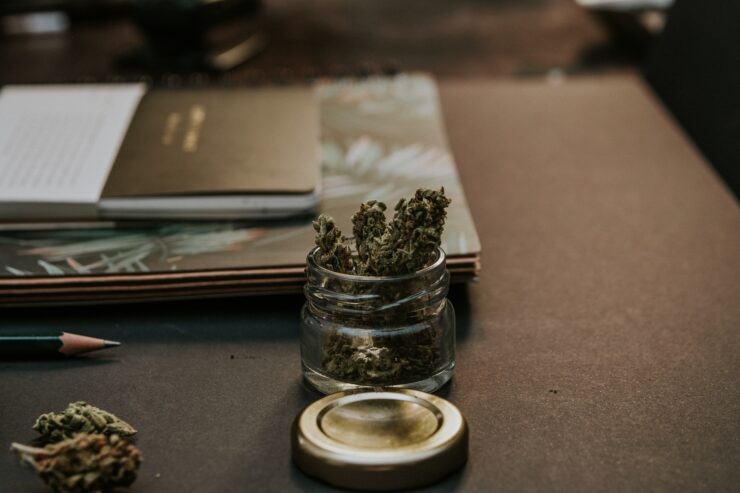Experts say weed consumption continues to rise during pandemic lockdowns
Let me paint you a picture: it’s 5 p.m. on a Thursday. You’ve had a long day of meetings on Zoom, Google Hangouts, etc. You’re hoping to start winding down for the night. What are you going to choose?
Some people choose alcohol, a glass of wine or a beer to drink before bed. But now more and more people are including cannabis into their daily, nightly, and weekly routines.
According to Statistics Canada, over 10 million units of cannabis were sold across Canada from October 2019 to 2020. Experts believe those numbers have drastically increased in the past year due to COVID-19 and the subsequent lockdowns.
Hexo Corporation reported revenue of around $30 million in 2020, compared to revenue of $14.5 million the same quarter the previous year. This seems to be a trend a lot of other cannabis companies are seeing.
Vice-president of corporate affairs at Delta 9, Ian Chadsey says the whole cannabis industry saw a big spike in sales at the beginning of the pandemic.
“The running joke was that people were buying toilet paper and cannabis, they were stocking up. So we saw record sales for everyone in the industry,” he said.
“It also meant more and more people were learning more about it and finding different ways to use it for health reasons, like sleep, anxiety, joint pain, or other purposes.”
Canopy Growth Corporation, one of the largest cannabis retailers in Canada, saw a 43 per cent increase in consumer sales in the last fiscal year. Jennifer White, director of corporate communications, attributes this to the addition of new stores and more foot traffic going through the stores, along with ‘click and collect’ models of service.
“Recreational sales essentially doubled versus [quarter one] 2021 as store operations returned to pre-COVID-19 level and we opened up additional stores in Alberta,” she said.
Chantal Vallerand, the executive director of Drug Free Kids Canada, said the increase in cannabis consumption can be directly tied to mental health during the pandemic.
“There’s a direct correlation between mental health and usage,” she said.
“So people generally speaking are and were using substances as a coping mechanism, and that’s why usage went up as a way of coping with increased anxiety, isolation, boredom. It was really common to hear.”
Ivy Bourgeault, a sociology professor at the University of Ottawa, said two aspects encourage substance use; reduction in barriers and methods of enablement. She says that both of these were introduced during quarantine.
“Enablers are things that encourage increased use, like the general social anxiety with the state of affairs. There has been remarkable disruption to people’s lives in both a social and cultural impact to financial impact,” said Bourgeault. “So people cope in a way that may not be the most productive way to cope but it’s a way to cope.”
“Because we’re at home and there’s no stigma, no sense of culpability, it’s more readily accessible. I mean, people don’t drink in offices like they do in Mad Men, but when you’re home, maybe you’ll have a drink at lunch or at the end of the day, around 4 p.m. instead of 7 p.m. So the opportunities are there to drink or to smoke a joint.”
Vallerand agrees with this, adding that there is no longer as much of a separation between work and home balance, blurring the lines of when and how often people are consuming cannabis and/or alcohol.
“Typically someone would go to work and come home Friday, and they would have a glass of wine and celebrate the weekend. But all of a sudden, Friday became Monday, Tuesday, Wednesday, Thursday, you’re coming out of the office and saying ‘Oh I’m done my Zoom’s for the day,’ ” she said.
Vallerand emphasizes that this increase in cannabis usage may not be as harmless as it appears, as she estimates that one in six teens will have a cannabis use disorder.
“If usage has gone up, it’s safe to say that addiction has also gone up. I was asked to validate some of these (statistics) and I was like that’s quite concerning.”
A study in 2011 found that 90 per cent of addictions are rooted in adolescence, and Vallerand says this extends to cannabis.
“So, rarely people will develop an addiction at 38. There’s also some indication that the earlier that experimentation happens, the more dangerous it is to develop a substance use addiction.”
While cannabis legalization has helped deter those of age from consuming street ‘weed’, under-age youth are continuing to resort to the black market for cannabis, among other substances. It doesn’t appear as though youth are the only ones who are still resorting to the illegal market for cannabis.
Chadsey estimates up to 70 per cent of the Canadian cannabis industry is on the black market, which means cannabis companies need to compete and show they are a better alternative.
“That’s what we have to do, is sell for the same price and make it obvious for people to choose going to a retail store. There’s a lot of opportunities to grow and we will grow as time goes on because I’m not sure about you but I want to know what I’m buying and if it has the quality I’m expecting,” he said.
White stated that the main focus of Canopy once COVID-19 began was to pivot their services to deter Canadians from turning to the black market.
“Canopy Growth responded to COVID-19 at the retail level to quickly pivot to a model that allowed customers to purchase safely reducing or eliminating the need for Canadians to turn to the illicit market for what was ultimately deemed an essential service in most provinces.”
Chadsey adds to this, saying that uncertainty in what you’re getting is a growing concern.
“When you’re buying cannabis from some guy from school you have no clue what you bought. And people who are adding more stuff [illicit drugs], they’re adding it to make it more powerful.”
“You can walk into any cannabis store that is legal and look at the bottle, and you can see right on the bottle the THC, and it’ll be exactly the same because it’s standardized. You know exactly what type of effect you’ll get from it.”
Vallerand says that if people are concerned with their substance usage, they should begin looking at alternative ways of coping and speaking to professionals for help.
“It’s not a matter of demonizing some substances, as long as it’s in the parameters of what’s safe to consume. But it’s a matter of understanding the context of why am I using this, how often, and what context I am using it. These are important questions to figure out if there is an issue with addiction.”
Bourgeault agrees, but heavily advocates for mental health support for health care workers specifically, to ensure they are meeting their needs and expectations. This will allow them to continue supporting people with addiction, mental health, or other issues.
“I’m actually really worried about our entire health workforce. We have put excessive stress on all of the people who are providing us care and we haven’t invested in infrastructure to assist them,” Bourgeault said.
“We have to remember the mental health and substance use workers themselves are struggling with mental health stressors, so they themselves need services but also be available to provide their services.”
Still, Vallerand admits there is still lots to learn.
“This is all new to everybody. Even though it feels like we’ve been in this forever, it’s fairly recent for us to research and do tracking studies. Add a layer of pandemic in all of this, it makes it quite tough for us to see, and we think we’ll be seeing a ripple effect in the upcoming months and upcoming years,” Vallerand said.
“But I think now more than ever we can show the exact correlation between mental health and substance abuse, and how substances can be used as a coping mechanism.”





